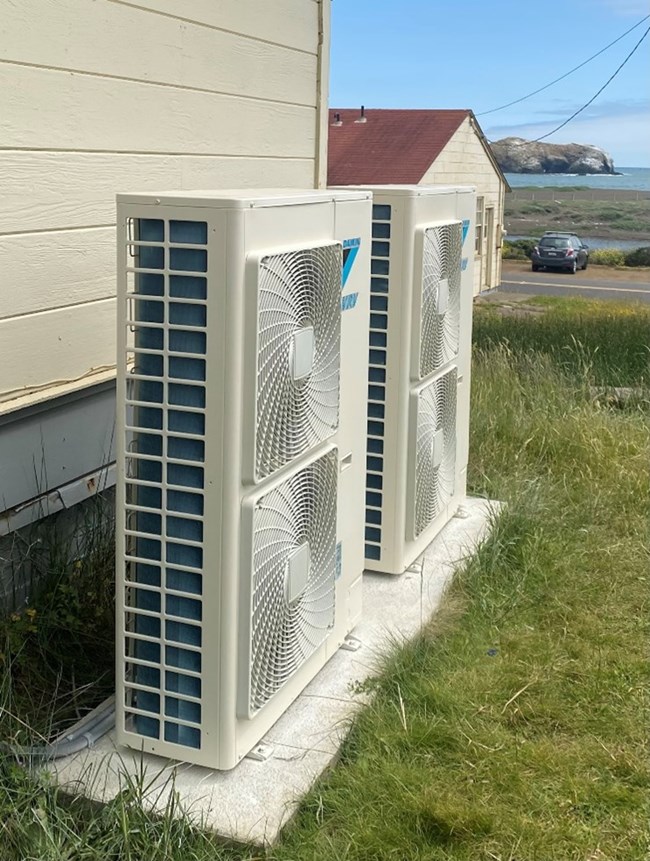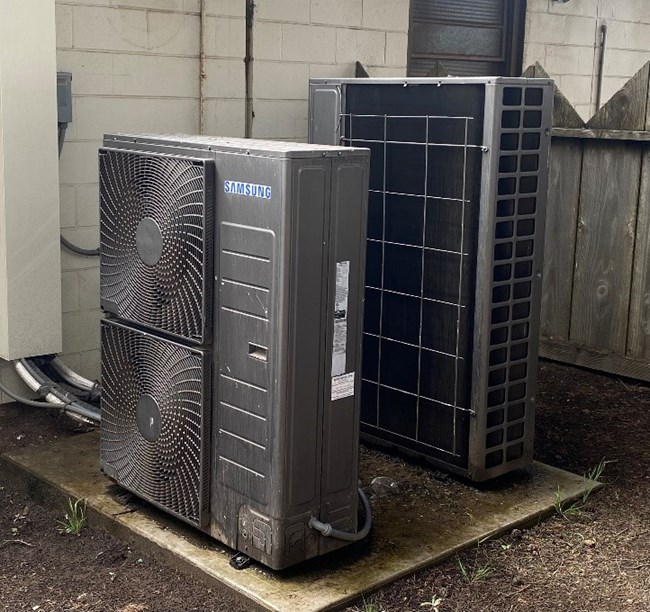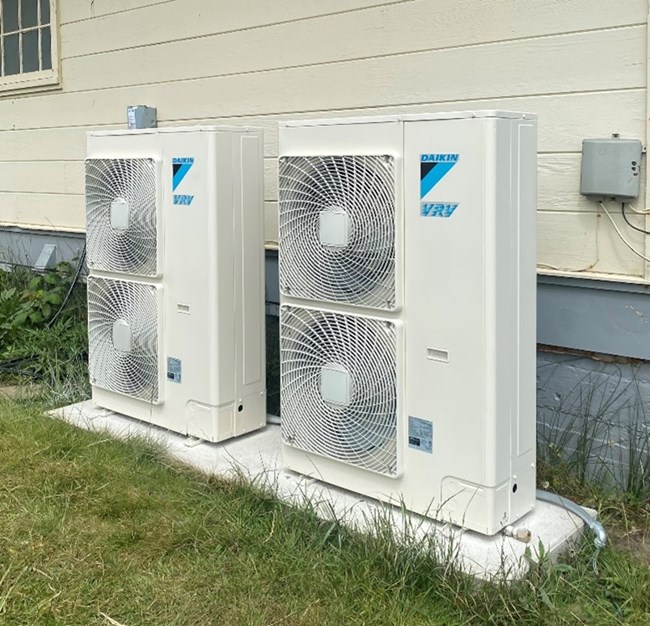Last updated: January 9, 2024
Article
The Magic of Heat Pumps - The Transition Away from Burning Fossil Fuels

Photo: National Park Service
As part of the park’s climate initiatives to reduce fossil fuel emissions, Golden Gate National Recreation Area (GGNRA) has been installing air-source heat pumps to shift away from propane gas for heating. Heat pumps work by pulling outside air through a series of fans, coils, and heat exchangers to be released as heat inside the building it serves.
Tommy Daigle, a park Facility Manager for the Marin Headlands, oversees installation of heat pumps at several park sites. He explains that a heat pump works like a refrigerator running backwards: it takes heat from the outside and runs it through the coils and vents, then forces it throughout the building. “It's almost magic,” he says, “even when it's cold outside there's still heat, and through the magic of physics it can bring that heat inside.”
Heat pumps help cut down on fossil fuel emissions because they rely on electricity instead of burning fuels like propane and natural gas. Golden Gate National Recreation Area already purchases renewable electricity through two community choice programs, Clean Power SF and MCE Clean Energy.
Not only are heat pumps more environmentally friendly, they are also energy efficient -- using half the electricity of other electric home heaters and returning 2-5 kilowatt-hours (kWh) of heat for every one kWh used. This creates a lower cost of operation over time compared to gas and other electric heaters.
Additionally, natural gas and propane prices fluctuate, while electricity prices are more stable, making it easier to track expenses related to the use and installation of heat pumps. Another benefit of many heat pump models is that individual zones can be manually controlled, ensuring that energy is not being wasted to heat or cool unoccupied spaces.
GGNRA has already installed heat pumps at Fort Cronkhite for intern dorms as well as two buildings at Fort Funston.

Photo: National Park Service
Fort Funston
At Fort Funston, two heat pumps have been installed outside the buildings they will be serving. Larger Building 101, intended for both NPS and Golden Gate National Parks Conservancy staff, is being heated and cooled by a large heat pump. The DVM S Eco Heat Recovery unit can support up to ten indoor units and its newer design allows for less noise when in operation. The smaller of the two units is connected to the adjacent residence intended for park staff housing.
The Building 101 heat pump is a ductless split system with multiple indoor coils connected to one outside condenser. The system is broken up into multiple zones of use, allowing cooling and heating to happen in different zones at the same time. Since this system replaces a propane furnace and there are no other propane needs at the site, the propane has already been disconnected.

Photo: National Park Service
Fort Cronkhite Dorms
Fort Cronkhite heat pumps used existing ductwork to distribute heat. Generated heat is sent through a central indoor unit then circulated by ducts and vents in the building. These types of heat pumps are less intrusive because they can be retrofitted into the existing system.
Since they are in a marine environment, the heat pumps will require regular cleaning to be protected against moisture and salt air. They can have a life expectancy of about 10 to 15 years if maintained properly.
There are many different models and types of heat pumps to choose from based on different needs like space, efficiency, and comfort. GGNRA plans to install more heat pumps when the opportunity arises to make bigger strides away from gas heating and work on electrifying the buildings.
< Back to GOGA Sustainability Newsletters
